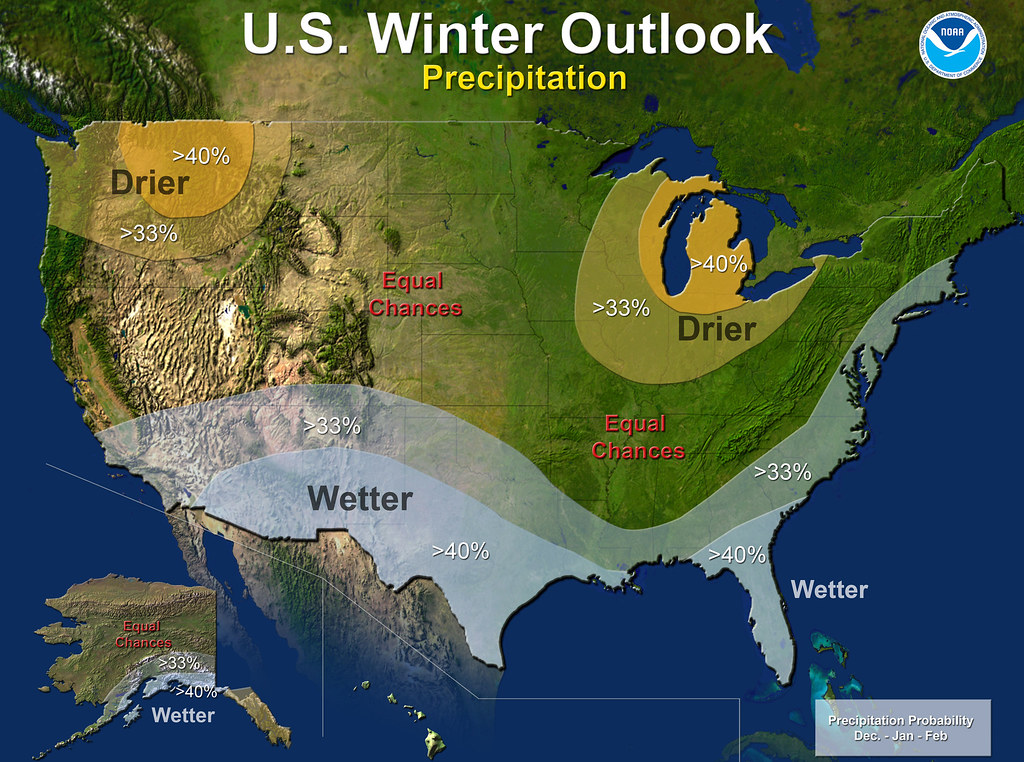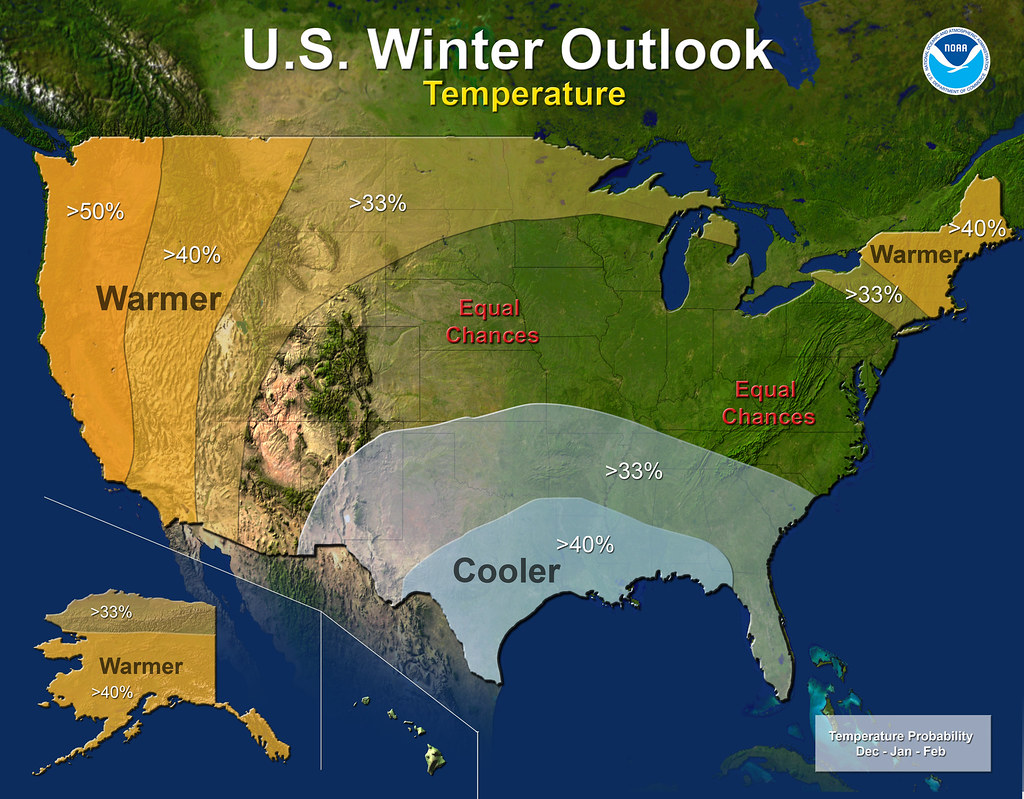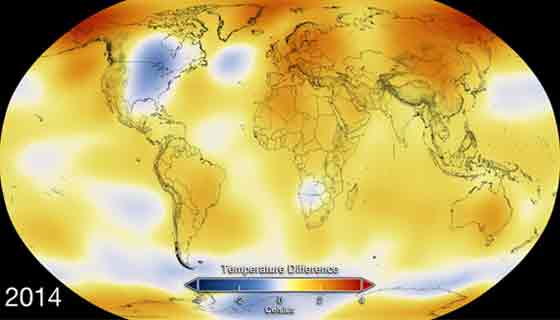The National Oceanic and Atmospheric Administration is predicting a drier than average winter for the South Bend area and Great Lakes region as a whole. They say that a repeat of last year’s extended extremely cold weather is unlikely.
NOAA’s long-term prediction is less confident on the temperature outlook for the Great Lakes region, saying that the odds for average winter temperatures are about the same as warmer or colder temperatures. They do not discount the possibility of bursts of cold air, as is expected during winter, but say that they do not see the polar vortex returning for extended periods of time.
NOAA is predicting a cooler than normal winter for the Southern United States from Florida to New Mexico. Warmer than average temperatures are expected on the West Coast (including Alaska) and into the Rockies, along the Northern tier of the country near the Canadian border, and into New England.
NOAA’s scientists say that El Niño, an ocean-atmospheric phenomenon that involves the warming of the tropical Pacific Ocean that affects global weather patterns, may still develop this winter. If El Niño does develop — which they forecast to only be a 67 percent chance before the end of the year — it is expected to be weak.
El Niño winters are often accompanied with warmer and drier air in the Pacific Northwest, Northern Midwest and New England.
“While drought may improve in some portions of the U.S. this winter, California’s record-setting drought will likely persist or intensify in large parts of the state,” NOAA says.
Nearly three-fifths of California is currently in an exceptional drought, which is the worst category. 2013 was the driest year on record. 2012 and 2013 were in the top 10 warmest years on record for California. NOAA projects that 2014 may be the warmest year on record for the state.
“Winter is the wet season in California, so mountainous snowfall will prove crucial for drought recovery. Drought is expected to improve in California’s southern and northwestern regions, but improvement is not expected until December or January,” NOAA continues.
The winter outlook was released today as part of NOAA’s Climate Prediction Center.
————










